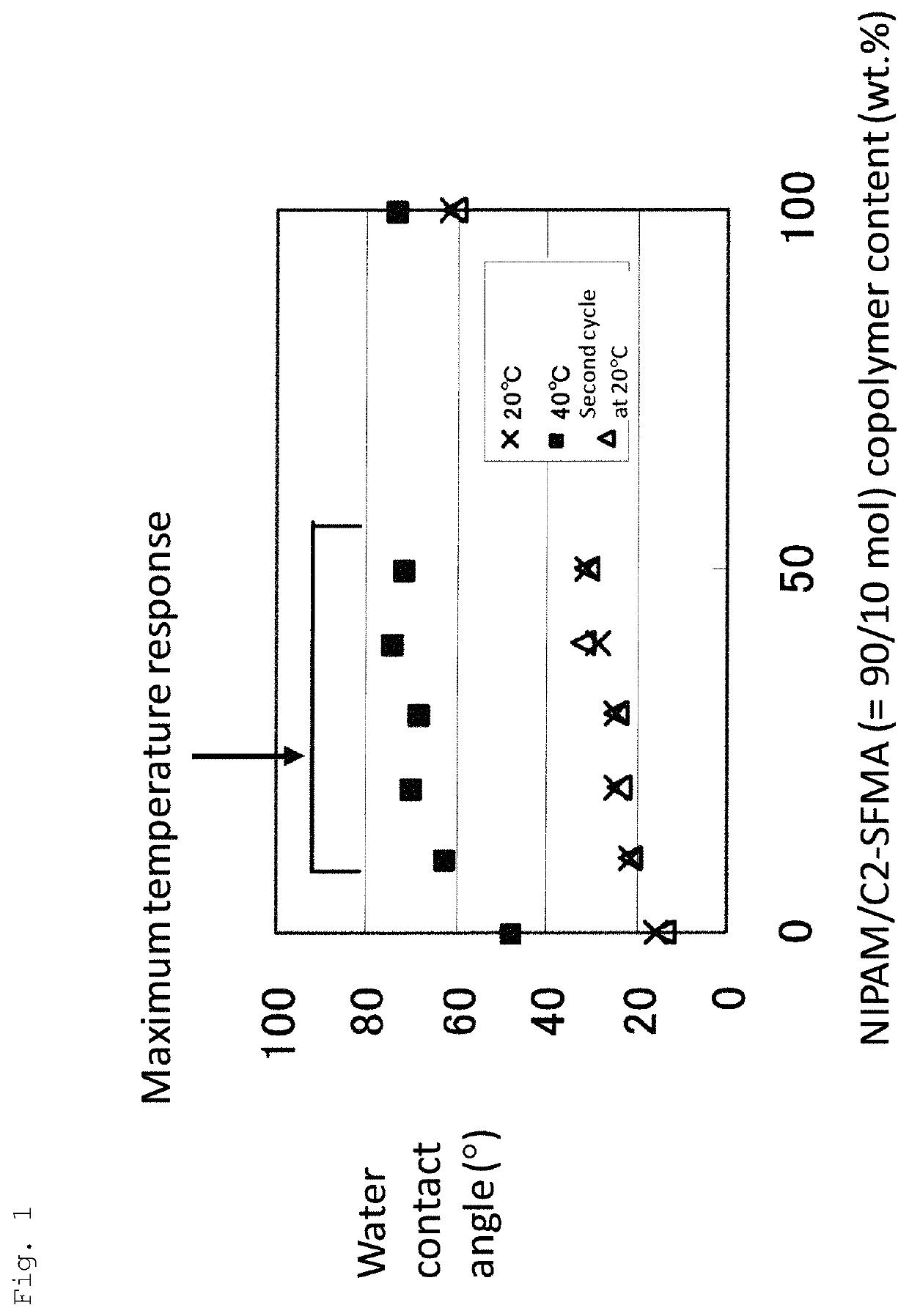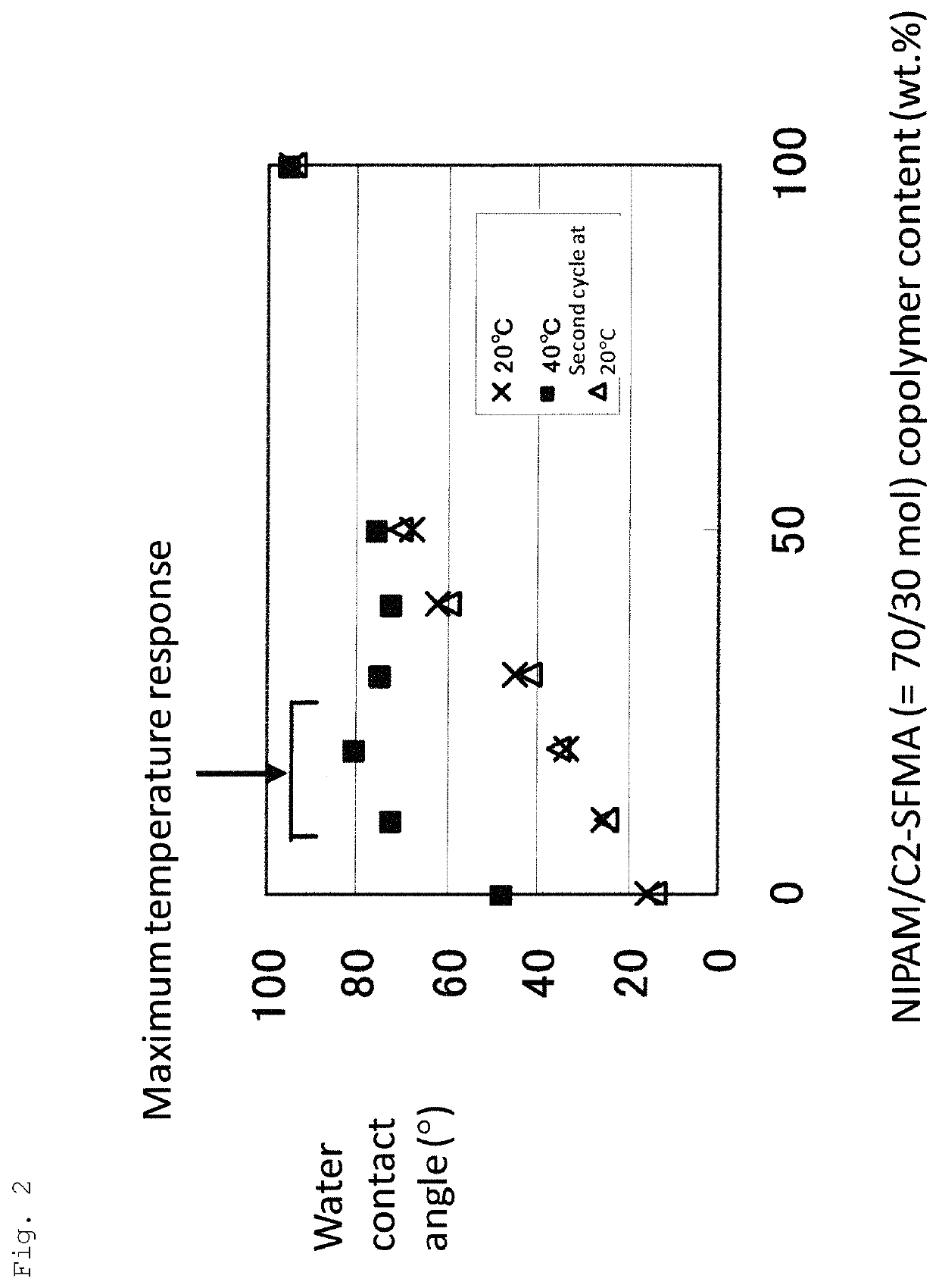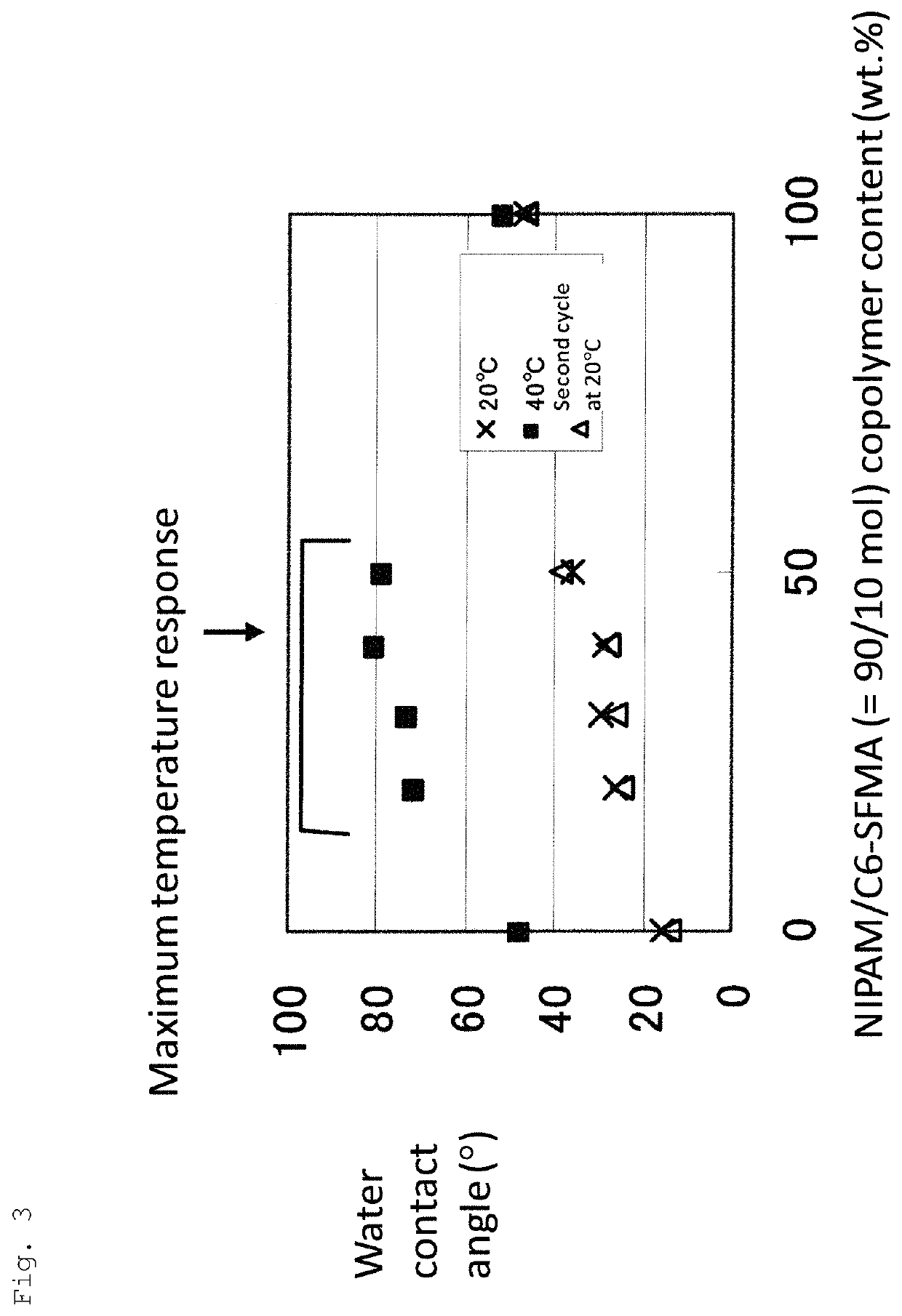Temperature-responsive base material, method for producing same, and method for evaluating same
a technology of temperature-responsive substrate and production method, which is applied in the direction of material heat development, biomass after-treatment, instruments, etc., can solve the problems of difficult harvesting in the form of an intact cell sheet, high probability of contamination and likelihood of impairing cell natural functions, and complex chemical treatment methods. , to achieve the effect of improving the properties of temperature-responsive substrate, easy removal, and less damag
- Summary
- Abstract
- Description
- Claims
- Application Information
AI Technical Summary
Benefits of technology
Problems solved by technology
Method used
Image
Examples
embodiment 2
1.4 Embodiment 2
[0173]Embodiment 2 is the above temperature-responsive substrate that comprises a temperature-responsive polymer having an LCST of 0 to 15° C. The temperature-responsive substrate having this feature is advantageous in that detachment of an object (e.g., cells) adhered to its surface can be controlled to take place only in a lower temperature region than conventional substrates.
[0174]Examples of temperature-responsive polymers having an LCST of 0 to 15° C. include, but are not limited to, polymers having a fluorine content of 2 to 20 wt. %, more preferably 2 to 10 wt. %, based on the polymer weight.
[0175]The fluorine-containing temperature-responsive polymer having an LCST of 0 to 15° C. may be a polymer having the structure described above in “1.1 Temperature-responsive polymer.”
[0176]Examples of the temperature-responsive polymer having an LCST of 0 to 15° C. include, but are not limited to, copolymers of a fluorine-free temperature-responsive monomer and a fluorin...
examples
[0225]The present invention is described more specifically with reference to Examples. However, the scope of the invention is not limited to these Examples.
examples 1 to 32
1. Examples 1 to 32 and Comparative Examples 1 to 4
1.1 Material
[0226]As cell culture substrates (cell culture dishes), Falcon® 3001 Petri dishes (diameter: 3.5 cm) produced by U.S. Corning Incorporated (formerly Becton Dickinson Labware) were used.
1.2 Pre-Irradiation Method
[0227]Each dish was irradiated with a dose of 100 kGy of electron beam. Subsequently, 0.12 mL of a 40 wt. % or 60 wt. % diluted solution obtained by diluting each monomer shown in Table 1 with isopropyl alcohol (hereinafter abbreviated as IPA) (in Comparative Examples 3 and 4, however, HCFC225 was used in place of IPA) was injected into the dish, and allowed to stand at room temperature overnight for surface graft polymerization.
1.3 Simultaneous Irradiation Method
[0228]A 40 wt. % or 60 wt. % diluted solution obtained by diluting each monomer shown in Table 1 with IPA (in Comparative Examples 3 and 4, however, HCFC225 was used in place of IPA) was injected into the dish in an amount of 0.12 mL. Subsequently, the di...
PUM
| Property | Measurement | Unit |
|---|---|---|
| LCST | aaaaa | aaaaa |
| temperature-responsive | aaaaa | aaaaa |
| LCST | aaaaa | aaaaa |
Abstract
Description
Claims
Application Information
 Login to View More
Login to View More - R&D
- Intellectual Property
- Life Sciences
- Materials
- Tech Scout
- Unparalleled Data Quality
- Higher Quality Content
- 60% Fewer Hallucinations
Browse by: Latest US Patents, China's latest patents, Technical Efficacy Thesaurus, Application Domain, Technology Topic, Popular Technical Reports.
© 2025 PatSnap. All rights reserved.Legal|Privacy policy|Modern Slavery Act Transparency Statement|Sitemap|About US| Contact US: help@patsnap.com



